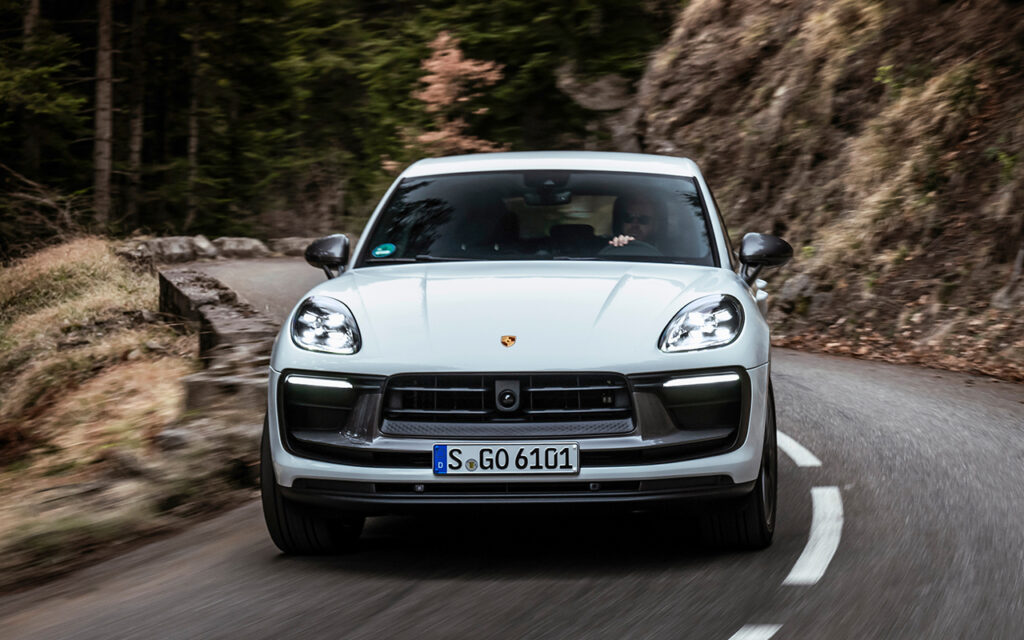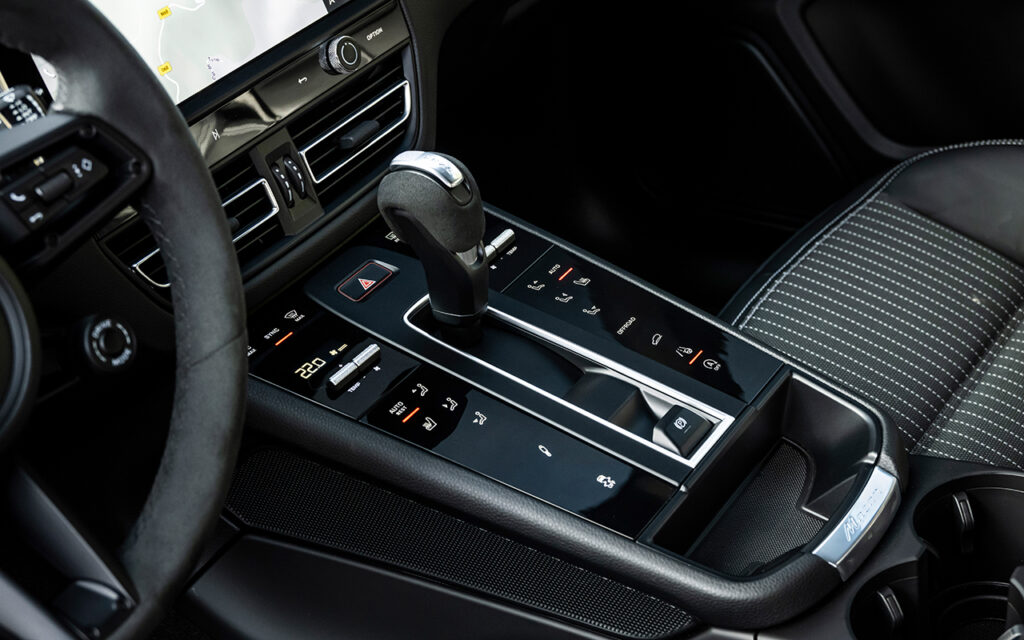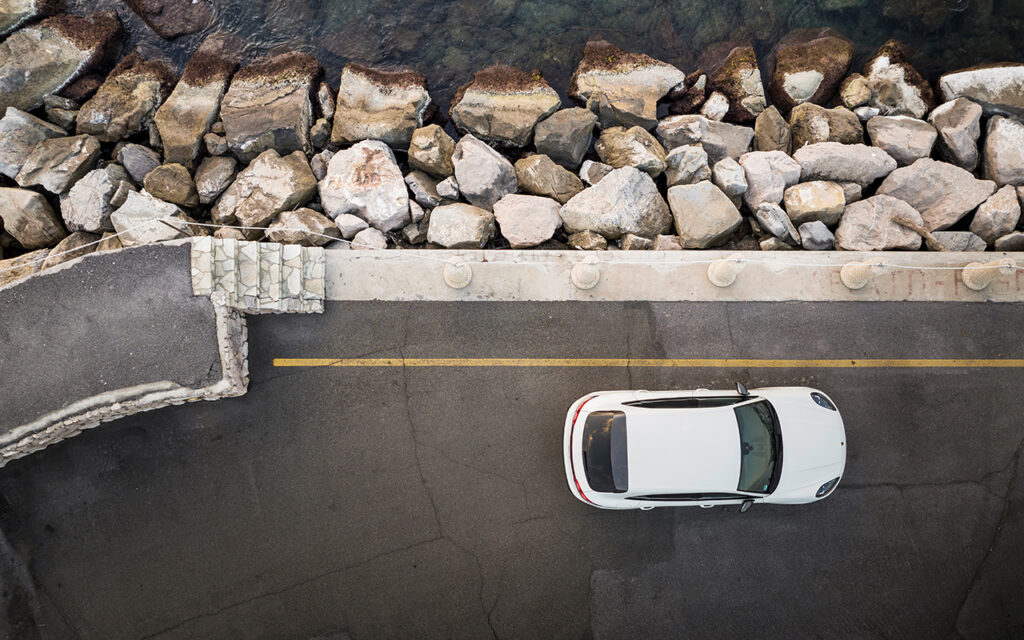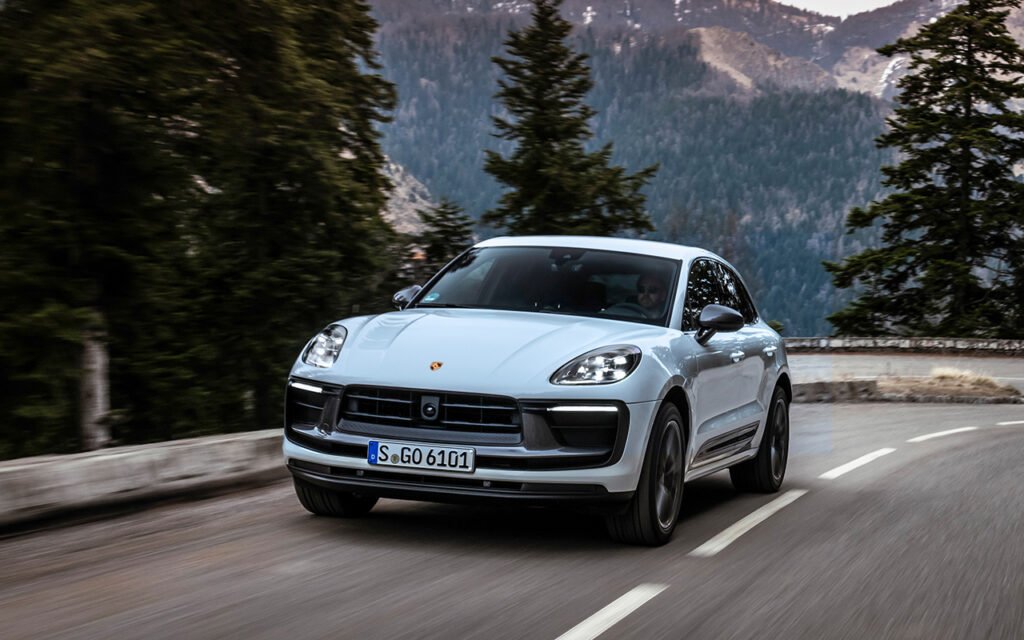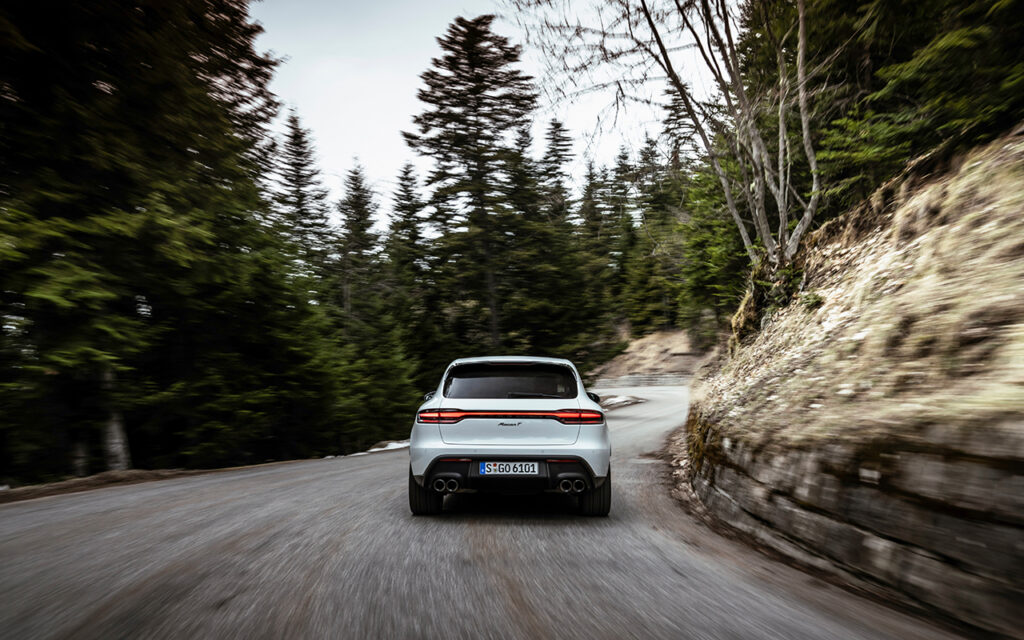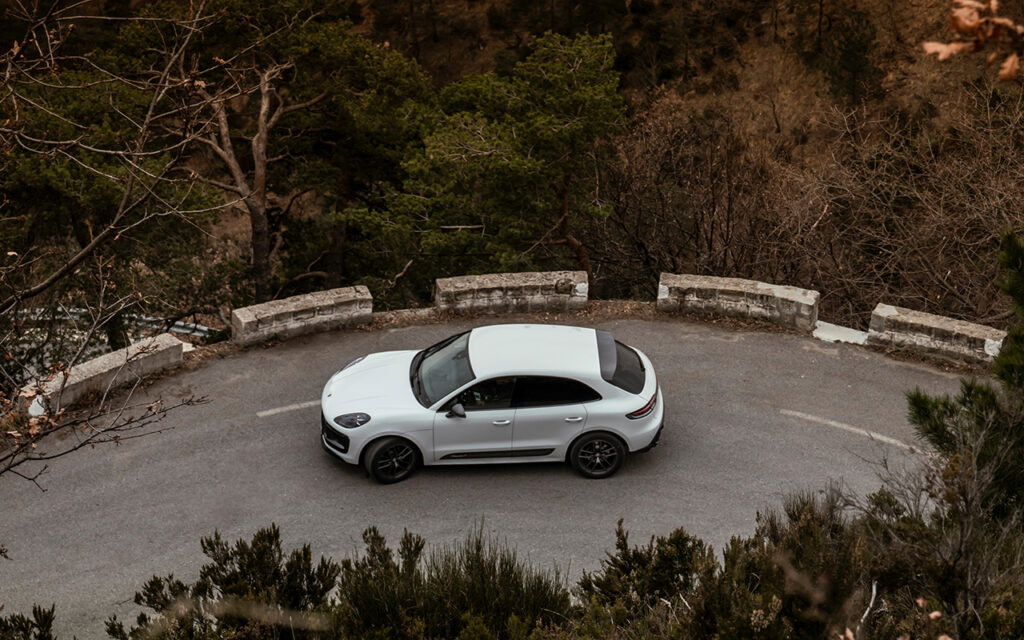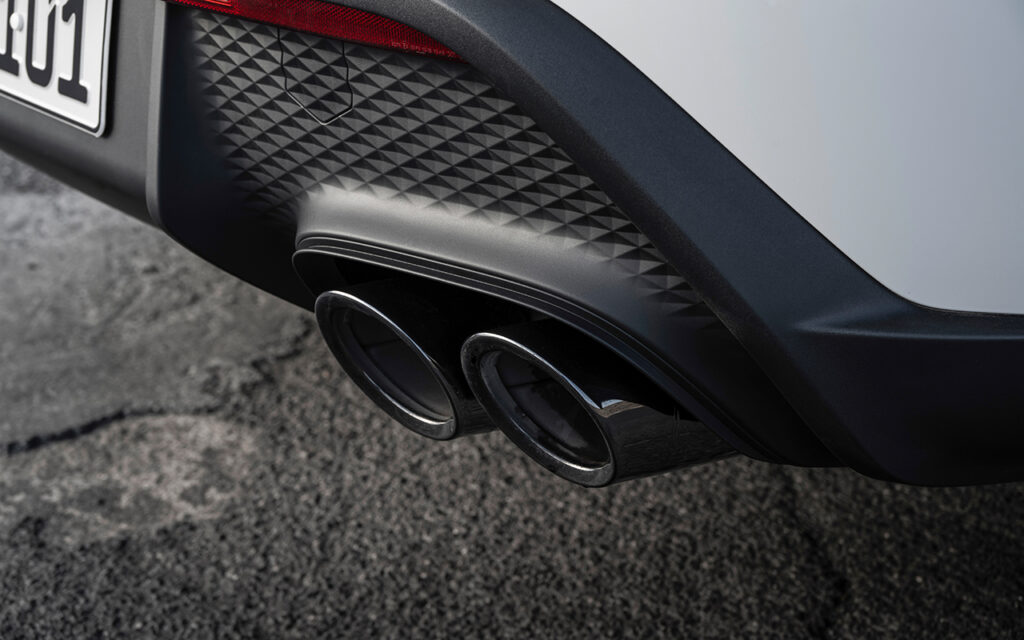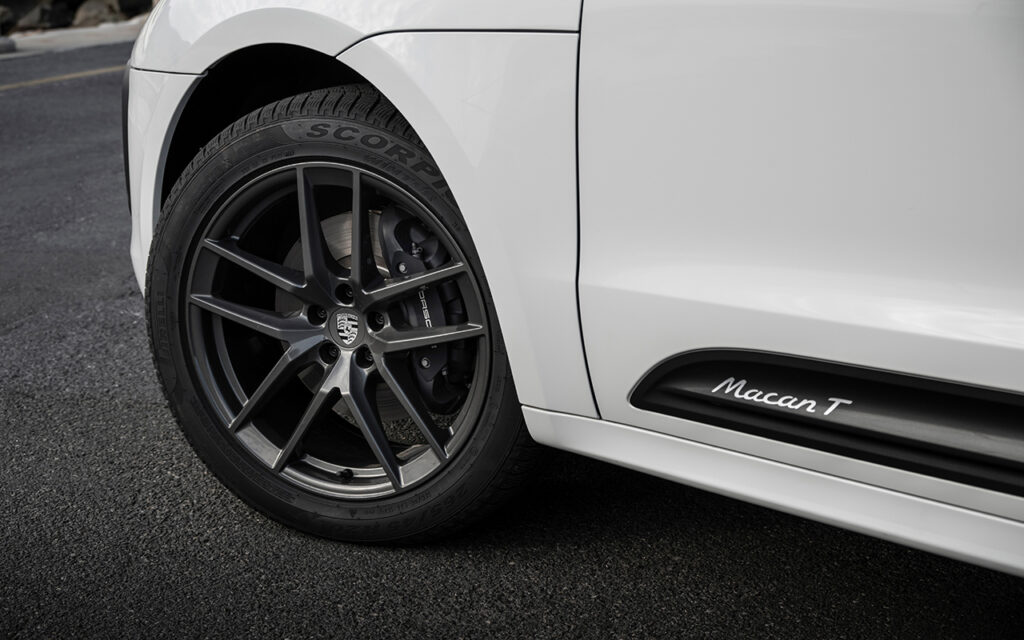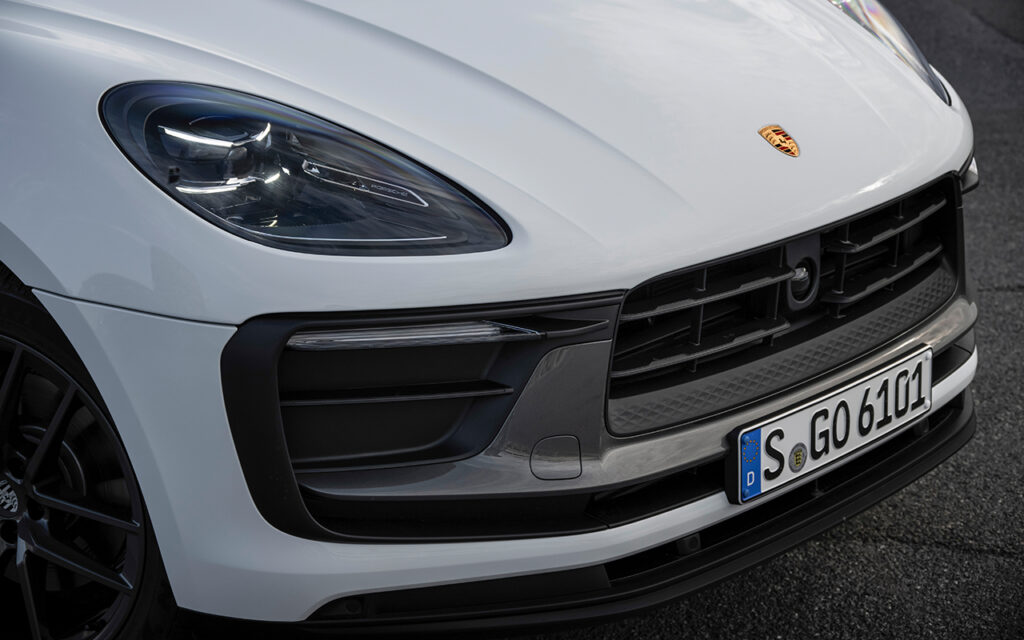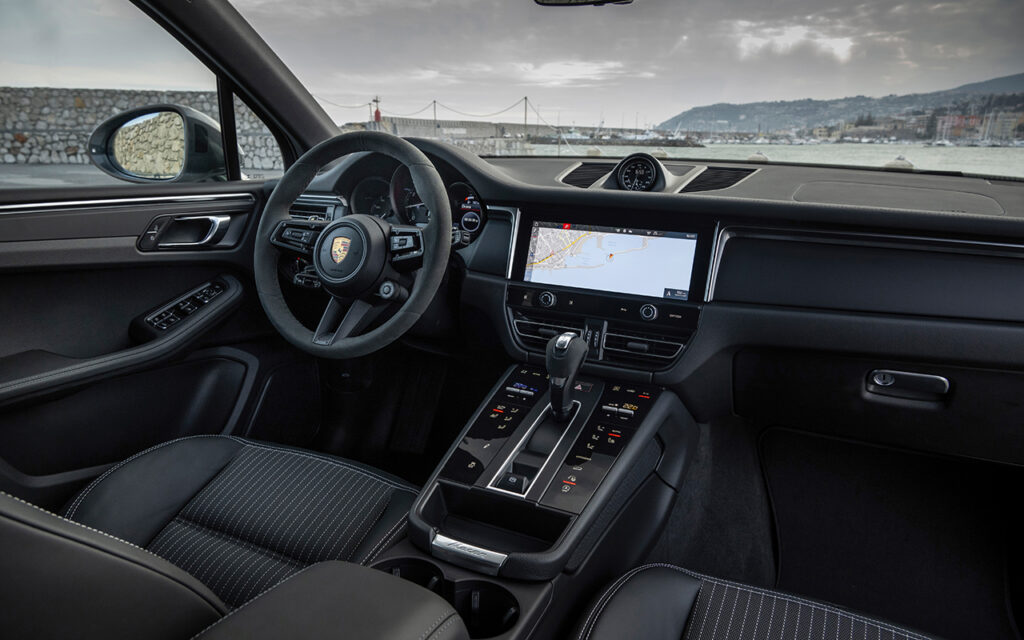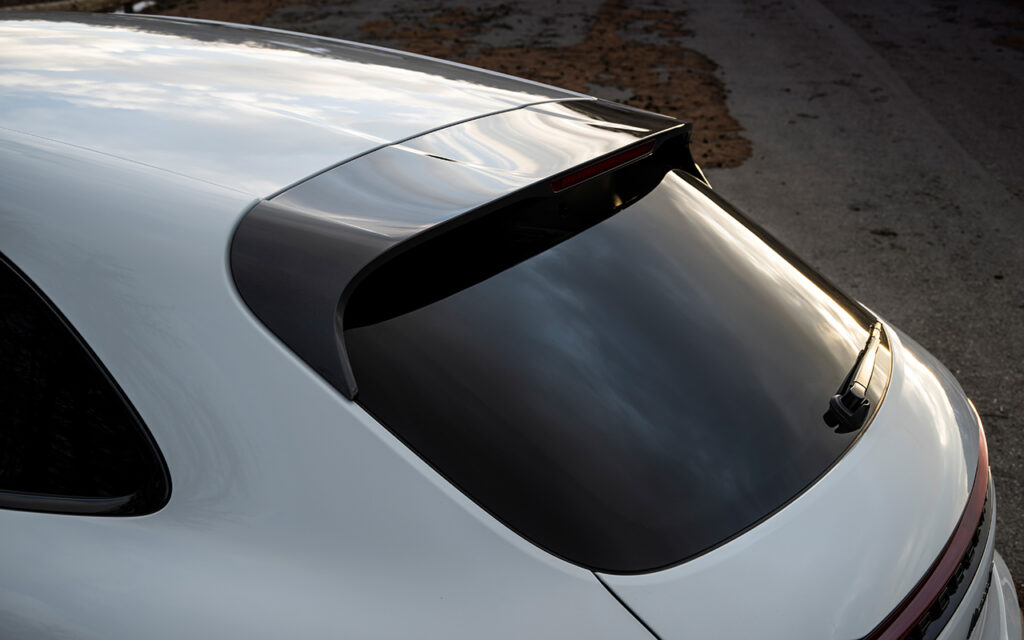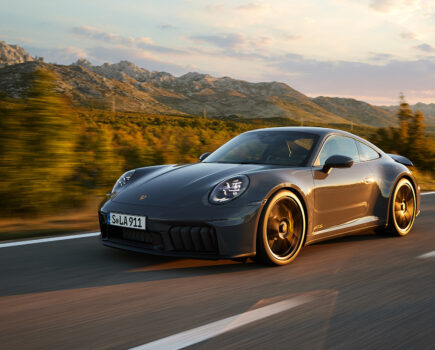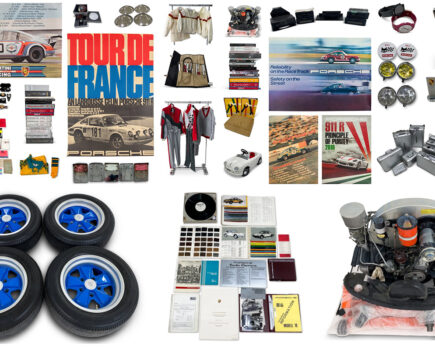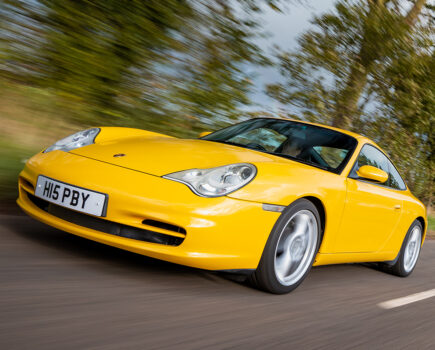Porsche is pitching the new Macan T as a higher-definition version of its most popular car – but is it worth the extra cash? We find out
Words: Dave Humphreys
It’s funny to think about how the first-generation Cayenne was received by Porsche purists when revealed to the world in 2002. These days, of course, SUVs form the core product portfolio of most major car brands, including Porsche. As a case in point, in 2021 the Macan accounted for almost a third of the company’s global sales – more than 80,000 factory fresh examples of the crossover luxury SUV found buyers. In fact, since model launch in 2014, Porsche has produced in excess of 680,000 Macans. These are staggering numbers when you consider how the fortunes of the Porsche brand have shifted over the last two decades, a tidal change to the better beginning with the arrival of the Cayenne.
In the present, a quick visit to Porsche’s online configurator will present you with a dizzying nineteen Cayenne model variants, ranging from a silent-running plug-in hybrid to the Nordschleife-conquering Turbo GT. In contrast, Porsche’s offering for the Cayenne’s smaller sibling, the massive-selling Macan, is more streamlined, though the line-up is growing, as demonstrated by the introduction of a fourth variant, the new Macan T.
The T designation was resurrected for the 2019 991 Carrera T after a half-century absence from the Porsche product line. Swiftly, the badge was introduced to the 718 Boxster/Cayman. It signalled a new niche designed to appeal to a subset of owners who love the pleasure of driving a more ‘distilled’ sports car. Now, the Macan gets similar treatment, marking the first time a four-door Porsche will carry the T moniker. Some will understandably view this with a degree of scepticism and see the move as a dilution of the pure, driver-focused ethos meant to be represented by the modern Porsche T.
The Macan T stands out from the rest of the Macan range with Agate Grey Metallic detailing around the front end. The same colour is applied to the Sport Design side mirrors, door blades (complete with model-identifying script) and the roof spoiler. The Macan T also wears twenty-inch alloy wheels similar to those of the Macan S, but painted an exclusive Dark Titanium, which ties the whole look together nicely. Porsche also applies a darker finish to the four tailpipes, again serving as further distinction from the base model.
Of course, body colour choice plays a role in how much the Agate Grey accent pops. Sticking with the standard white paint makes it more obvious, but we also think it works well with Gentian Blue Metallic (add £674) and the more costly Crayon (at £1,676), resulting in a more head-turning look.
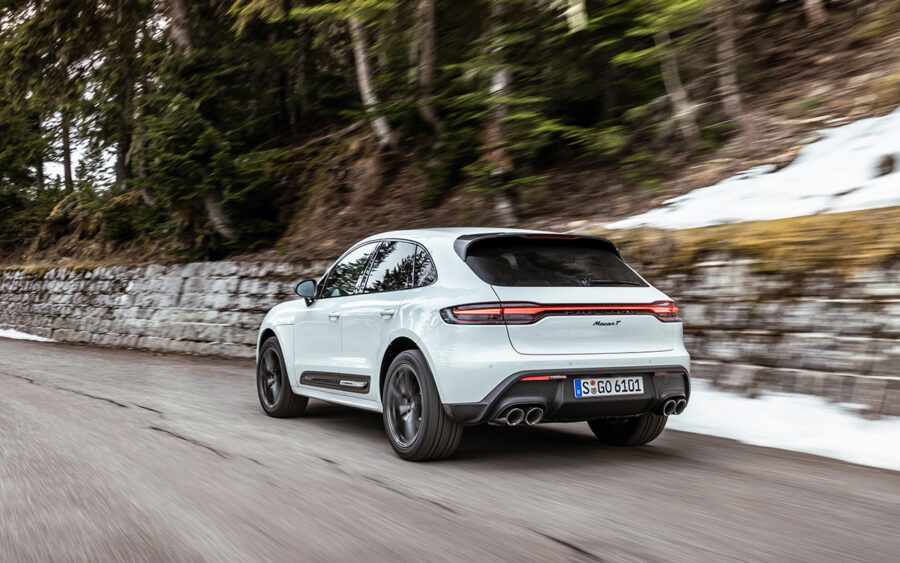
The interior benefits from neat touches, too. A heated GT Sports steering wheel includes the mode switch for the standard Sport Chrono Package, while eight-way electrically adjustable heated seats are draped in black leather and Sport-Tex inserts featuring silver contrast stitching and the Porsche crest embossed on the headrests. If you like the Agate Grey exterior detail, it’s possible to option matching seat belts, though they will come at additional cost.
Elsewhere, the T’s interior is as you’d find in the standard Macan. It’s a well-designed cabin, if a little lacking in colour, but don’t worry, you can alter this too, providing you’re willing to delve further into the lengthy list of optional extras. While you’re there, adding the carbon-fibre option to the steering wheel will do little to alter the Porsche’s kerb weight, but it does look better and feels nicer than the plastic your thumbs will rub against on the standard part.
Recent revisions to the Macan range’s interior are carried over to the T, with a centre console which now uses touch-sensitive surfaces to replace physical buttons.
The result is a cleaner look, less fussy, more modern and not entirely a magnet for fingerprints. A 10.9-inch touchscreen offers most of the connectivity you’ll ever need from a modern infotainment system, with voice control and online navigation as standard. There’s Apple CarPlay, but Android users miss out on a mirroring option, which in this day and age seems like a strange omission. Also missing from the equipment list are items which, in a premium SUV such as this, should be standard, such as adaptive cruise control and a reversing camera, the latter fitted only after you agree to pay £362 for the privilege.
Nonetheless, modern T-badged Porsches are supposed to represent a model offering a dynamic driving experience bolstered by bespoke equipment. With Porsche already offering S and GTS models with 375bhp and 434bhp respectively, however, the Macan T’s enhanced aesthetic doesn’t come with more horsepower — the two-litre turbocharged EA888 four-cylinder engine carries across from the standard Macan and remains unchanged, with maximum outputs of 262bhp and 295lb-ft. There is logic to this decision, though.
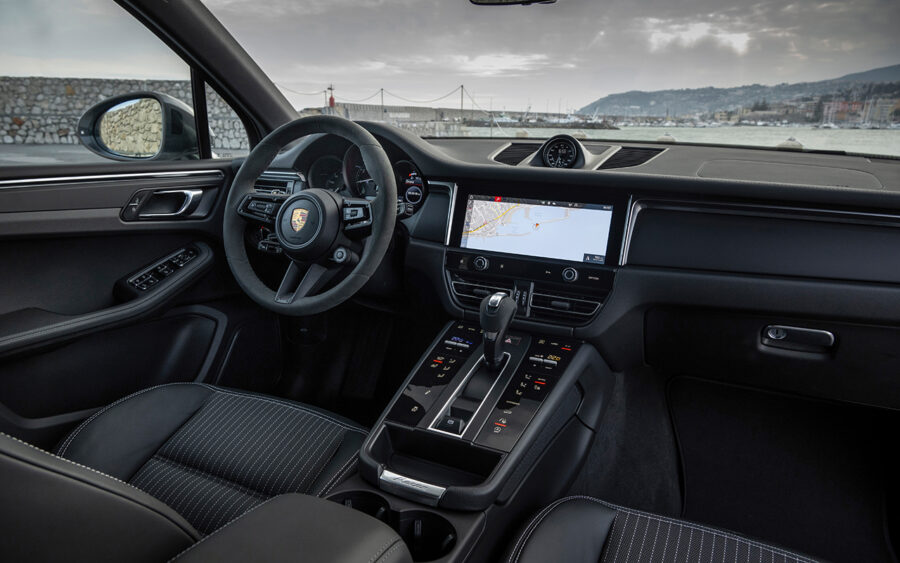
The V6 is unquestionably the more exciting and sonorous engine, but the four-cylinder represents a weight saving of 58.8kg over the front axle, which has a perceptible impact on handling and helps to reduce overall weight by 95kg. Compensating for the lack of a punchier engine, the chassis boffins at Porsche equip the Macan T with stiffer anti-roll bars on both the front and rear axles. The steel-sprung suspension is set up to reduce ride height by fifteen millimetres and features Porsche Active Suspension Management (PASM) — a unique combination for the Macan. Porsche also offers the Macan T with the option of air suspension, which lowers the ride height by a further ten millimetres.
The seven-speed PDK dual-clutch automatic gearbox is unaltered, although tweaks to the all-wheel-drive transmission favour a more rearward bias and, it should be noted, the Porsche Traction Management (PTM) system has a model-specific setup. Meanwhile, the Sport Chrono Package helps shave two tenths of a second off the sprint to 62mph when compared with the standard Macan, bringing the time down to 6.2 seconds. 100mph arrives a blink past sixteen seconds.
For most of the time, the Macan T is likely to eke out an existence much like many other Macans, dutifully serving the needs of its owners by undertaking daily commutes, school runs, the weekly shop and similar chores. Even so, no matter how mundane your everyday driving might be, this Porsche does feel that bit more special than other equally premium SUVs. And, it has to be said, as lovely as the silky V6 is, when you’re engaged in more mundane everyday driving, the four-cylinder engine takes care of business without leaving you feeling short-changed — the Macan T will happily trundle around town all day long and do so with ample levels of refinement along the way.
One further bonus more relevant than ever is that the EA888 engine is likely to use less fuel than its V6 sibling in the process, which, given the rising costs of motoring, even those who can afford to splash out on a new Porsche will welcome. And, for those who don’t want to visit petrol stations quite as frequently, as well as those of you who plan to embark on long-haul road trips, Porsche offers the Macan T with a larger-than-standard seventy-five-litre fuel tank.
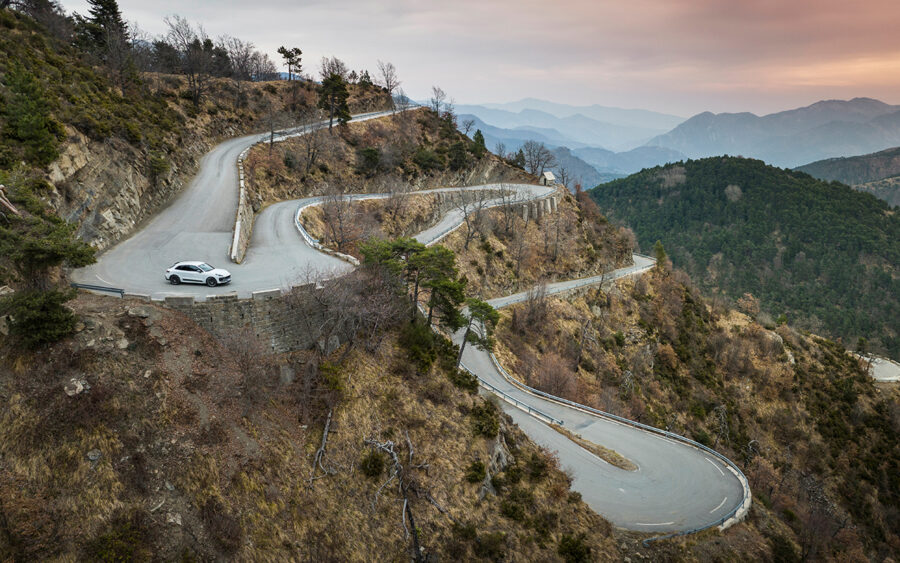
Simply going from A to B will do little to demonstrate the setup differences the Macan T has over the base model. For this, you need to find a more challenging road, which is why we headed in the direction of one of rallying’s most famous routes: the Col de Turini. This southern Alpine pass is a staple of the Monte Carlo Rally and a short jaunt from fashionable Nice. The nineteen-mile stage is famous for its narrow, fast-flowing sections and technical hairpins. What better place to put the Macan T through its paces in order to see just how that re-worked chassis performs?
It’s on the more open sections of road — where the line of sight is better — you begin to miss the heavyweight punches of the V6’s performance. The four-banger’s peak torque arrives at 1,800rpm and has generous spread, but we found ourselves pushing the Sport Response button frequently, especially when attempting swift overtakes. What’s missing is a more evocative soundtrack, and even with the Macan T dialled into the Sport Plus mode, there simply isn’t the same fizz and theatre of the larger capacity engine.
That said, the four-cylinder unit does put in a solid effort, and it works well with PDK to help maximise performance when asked. Perhaps more rewarding is how precise and sharp the Macan T’s front end is when you present it with a series of challenging bends. The steering is nothing short of sublime and comfortably sets a benchmark for SUVs in this segment of the market.
In true Monte Carlo Rally style, the weather begins to close in as we ascend the 1,607-metre pass. Sporadic mounds of snow by the roadside validate the decision to fit winter tyres to our Macan T, and the increasingly damp asphalt gives the all-wheel-drive transmission more of a workout as it fluctuates split of drive between the two axles. For the majority of the time, a rearward bias is maintained, and you can feel as much when the Macan pushes its way out of corners. It is, however, superb traction and grip from the front end that imbues you with the confidence to acknowledge everything is going where you want it to.
With provocation, it’s possible to unsettle the back end on some of climb’s corners, but any lateral acceleration is quickly brought back into line by the highly effective yet pleasingly unintrusive traction aids.

Body control is excellent, making swift changes of direction feel laser-sharp. It’s in these scenarios, rather than the everyday driving situations, where those chassis adjustments to the Macan T become apparent. Any shortfall in straight line acceleration is soon made up around bends, where no amount of enthusiasm at the controls seems to faze the Porsche.
An option some prospective buyers may labour over is whether to stick with the standard steel-sprung suspension or hand over extra dosh and upgrade to air suspension. We had the opportunity to try both, back-to-back, over the sinuous Turini tarmac, and differences between the two are more subtle than they are apparent. The stock steel option is firm, but never uncomfortably so, even with those twenty-inch wheels.
With air, there’s a slight degree of more comfort in normal driving conditions, but as the selectable driving modes are dialled up to the Sport Plus setting, the ride becomes noticeably firmer to the point that, on these kinds of roads, overall comfort is compromised — you can sense every lump and bump, no matter how small. In reality, the standard setup is already so good, there’s little reason to shell out for air suspension.
Porsche Macan T: our verdict
The fact there isn’t any power increase for the Macan T could potentially make it more of a niche variant than it deserves to be. Those slight nips and tucks to the chassis setup all seem to be done in the usual well-judged Porsche way, but we can’t help feeling the two-litre engine could do with having a few more horses released – a boost to give the T that extra bit of oomph it sometimes feels lacking on the open road.
If you can live without, however, there’s absolutely no reason to question the premium price tag of the Macan T over the base model.
